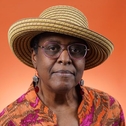Chief Justice John Roberts has convinced himself the United States has reached the Promised Land, while those of us focused on social justice are still climbing the rough side of the mountain. Viewing the world from his differently focused glasses, he has declared over a 10-year period that there is no longer a need for federal voting rights protections (Shelby County v. Holder, 2013) and there is no longer a place for affirmative action in higher education (Students for Fair Admissions Inc. v. President and Fellows of Harvard College and Students for Fair Admissions Inc. v. University of North Carolina et al, 2023).
In the meantime, Black people are catching hell when they try to vote in my home state, Georgia, and its neighbors. Those retro Confederate bastions are playing whack-a-mole, coming up with ever more twisted ways to deny access to the ballot. And we know what happens when the top-tier schools in a state cut back on tried-and-true affirmative action initiatives: Fewer Black and Latino students are admitted to those PWIs, or predominantly white institutions, as happened in California after voters rejected affirmative action 25 years ago.
Speaking from experience, I can attest that it has often been through sheer grit plus the luck of the draw that many of the most talented and single-minded among us have succeeded despite obstacles. So, while I’m peeved by the ruling, it was hardly a knockout punch. Four things took place that shaped my perspective on the day the Supreme Court said race could not be one of the factors considered in admissions decisions when institutions of higher learning take steps to make their campuses more diverse and, in the process, address historical disadvantages faced by Black and brown applicants.
First, on that very day, California’s reparations task force presented the results of two years of work, including more than 100 recommendations for compensating descendants of enslaved people. It offers a primer on why affirmative action in various forms remains a necessity.
“Anyone who says that we are colorblind, that we have solved the problem of anti-Black animus and racism, I challenge you to read this document,” a task force member said.
Second, Christine King Farris died at the age of 95. The older sister of Martin Luther King Jr., Farris was thrust into the role of warrior by virtue of being born into that particular family of activists. She never took her eyes off the prize, even when tragedy struck time and again. One brother assassinated. Another brother drowned. Her mother assassinated while playing the organ at the family’s home church, Ebenezer Baptist in Atlanta.
Farris is one of many good and faithful servants, as they say in the church, who has completed her task. It’s now our turn to advance the cause. It was Farris’ sister-in-law, Coretta Scott King, who said: “Struggle is a never-ending process. Freedom is never really won. You earn it and win it in every generation.” I’m younger than she, but my generation is getting tired. It’s really time for those much younger than us to take up the mantle.
I fumed at the Supremes and mourned Farris’ death as one more reminder of the dwindling number of men and women who hit their stride in the 1950s and 1960s demanding the civil rights and voting rights promised to our formerly enslaved forebears a century before. But then a third thing happened. I saw a text message that a cousin in Georgia had sent just minutes after the Supreme Court ruling. “Do you think this might have a positive impact on HBCUs?” he asked.
That’s when the fourth thing occurred. I read a statement from Dr. David Wilson, the president of Morgan State University and a nationally recognized leader in the quest for equity and excellence in education. In condemning the ruling he predicted will “erode decades of progress in cultivating diversity” at many PWIs, he reminded us that historically Black colleges and universities (HBCUs) have never had exclusionary policies based on race. Thus, they haven’t struggled with how to open their campuses the way PWIs have with varying degrees of intentionality during the past 60 years.
Morgan, he said, “will continue to serve a multiethnic and multiracial student body, ensuring that the doors of higher education are opened as wide as possible to as many as possible.” Morgan has been doing that since 1867 and is among more than 100 HBCUs nationwide, including three others in Maryland, that share that charge. “In the wake of this decision,” President Wilson vowed, “Morgan State University will continue in its mission, remaining a welcoming and embracing home for anyone desiring a high-quality education.”
So, while the struggle continues for PWIs to match HBCUs, and more broadly for the instruments of power and influence in this country to address inequities that impede the advancement of all regardless of color, class or creed, there really are options. As Christine King Farris no doubt sang many a time over her long life: “Ain’t gonna let nobody turn us around …” Not even the Supreme Court of the United States.
E.R. Shipp is a veteran journalist and Pulitzer Prize-winning columnist. She is also an associate professor at Morgan State University.





Comments
Welcome to The Banner's subscriber-only commenting community. Please review our community guidelines.